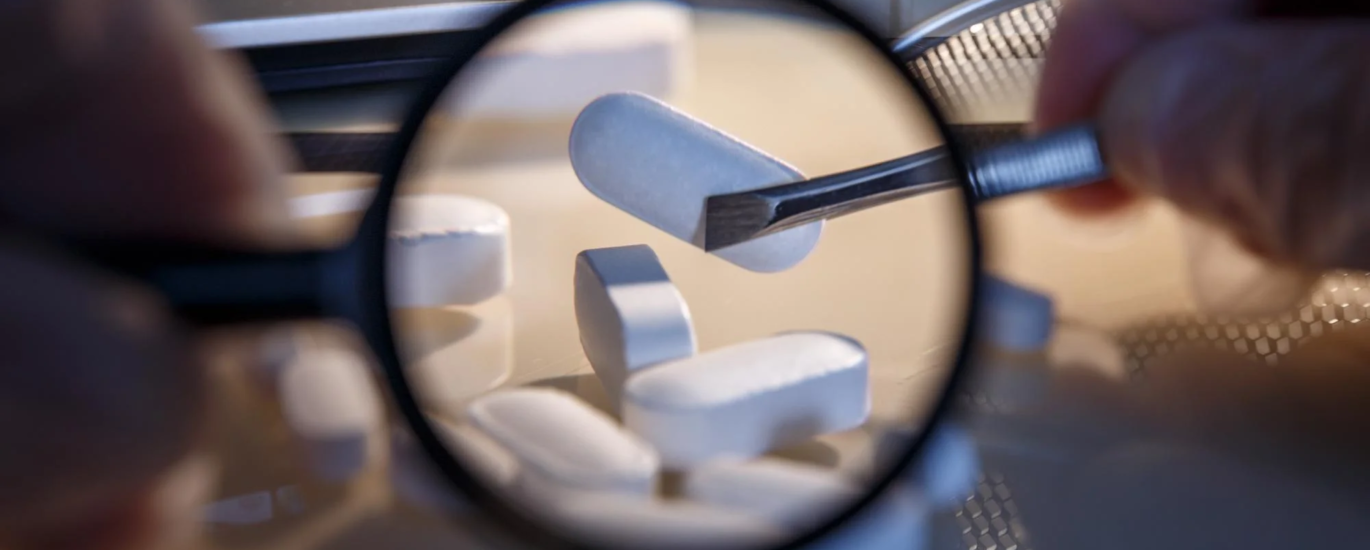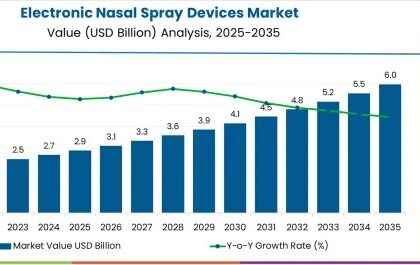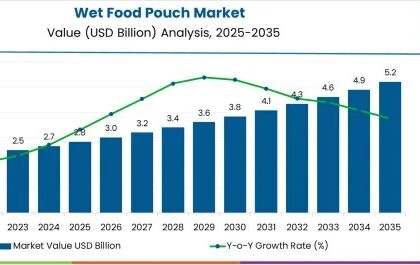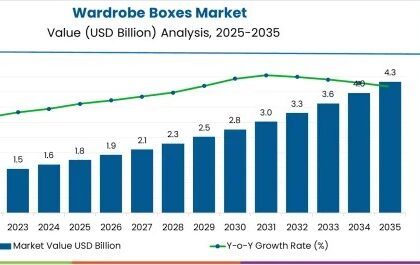The counterfeit drug detection device market is anticipated to be worth USD 1,167.7 million in 2024. The market is expected to grow at a steady rate over the period from 2024 to 2034, with a CAGR of 3.3%. By the end of the forecast period, the market value is predicted to hit USD 1,615.6 million.
The counterfeit drug detection device market has emerged as a critical component of global healthcare and pharmaceutical security. As the proliferation of fake medications continues to threaten patient safety, the need for advanced detection solutions has never been more urgent. These devices play a pivotal role in identifying and preventing the distribution of counterfeit drugs across supply chains, pharmacies, and even hospitals. By enabling accurate and fast authentication of pharmaceutical products, these technologies are safeguarding not only the health of patients but also the integrity of medical institutions and drug manufacturers.
This market includes a wide array of technologies, such as spectroscopy-based devices, RFID tags, holograms, and mobile-based detection tools. Growing investment in healthcare infrastructure, alongside regulatory push from government bodies and international organizations, has made these devices indispensable. From handheld analyzers used by field officers to advanced laboratory solutions, the counterfeit drug detection device market is undergoing significant transformation to meet rising demand.
Get Sample Report: – https://www.futuremarketinsights.com/reports/sample/rep-gb-7838
Market Trends
One of the most prominent trends in the counterfeit drug detection device market is the integration of smart technologies like artificial intelligence and blockchain. These innovations enhance traceability and automate the detection process, making it more efficient and less prone to human error. AI-driven devices are capable of learning from vast datasets, thereby improving detection accuracy over time. Blockchain, on the other hand, adds a layer of transparency and immutability to the pharmaceutical supply chain, making it harder for counterfeit drugs to enter legitimate channels.
Another emerging trend is the shift toward portable and user-friendly devices. As field verification becomes more prevalent, there’s a growing demand for compact, mobile-compatible devices that can be used by non-specialists. This trend is particularly beneficial in low- and middle-income countries, where access to advanced laboratory infrastructure is limited. Additionally, companies are developing cloud-based data sharing platforms that allow real-time monitoring and centralized oversight, facilitating coordinated responses to detected threats.
Driving Forces Behind Market Growth
Several key factors are fueling the growth of the counterfeit drug detection device market. First and foremost is the rising incidence of counterfeit drugs globally. The World Health Organization has repeatedly highlighted the severe impact of fake medications, which often contain incorrect dosages or harmful substances. This has pushed regulatory bodies to implement stricter monitoring and compliance standards, thereby boosting demand for detection technologies.
Secondly, the increasing globalization of the pharmaceutical supply chain has added complexity to drug distribution, making it easier for counterfeit products to infiltrate legitimate markets. In response, pharmaceutical companies are investing in robust anti-counterfeiting measures, including detection devices, to maintain product authenticity and brand trust. Additionally, growing awareness among consumers about the dangers of counterfeit drugs is encouraging the use of verification tools at the point of sale.
Technological advancements also play a significant role. Innovations in spectroscopy, molecular tagging, and data analytics have dramatically improved the effectiveness and affordability of detection devices. This has enabled wider adoption across various sectors, including retail pharmacies, customs agencies, and logistics providers.
Challenges and Opportunities
Despite its growth, the counterfeit drug detection device market faces several challenges. High initial investment costs and limited awareness in underdeveloped regions are significant barriers. Small-scale pharmacies and healthcare providers often struggle to afford advanced detection systems, leading to uneven adoption rates. Additionally, the lack of standardized protocols for counterfeit detection can create inconsistencies in identifying fake products.
However, these challenges also open up opportunities. There is a clear demand for cost-effective and scalable solutions, particularly in emerging markets. Companies that can offer affordable, easy-to-use devices stand to gain a competitive edge. Public-private partnerships and increased government funding could also bridge the accessibility gap, enabling widespread deployment of detection technologies.
Moreover, as regulatory bodies across the globe enforce stricter guidelines for pharmaceutical traceability, there is a growing opportunity for device manufacturers to develop compliant and interoperable systems. Educational campaigns and training programs can further boost adoption by helping users understand the importance and usage of these devices.
Recent Industry Developments
The counterfeit drug detection device market has seen numerous developments in recent years. Major companies have launched AI-enhanced devices capable of conducting rapid on-site testing, reducing the time taken for analysis from hours to minutes. Several firms have also collaborated with blockchain platforms to integrate end-to-end traceability features within their devices, offering a more comprehensive solution.
Another notable trend is the increased involvement of regulatory authorities and international organizations. Agencies like the U.S. Food and Drug Administration (FDA) and the European Medicines Agency (EMA) have introduced initiatives aimed at strengthening drug supply chain security. These programs often include provisions for adopting advanced detection technologies, thereby driving demand within the industry.
In terms of product innovation, manufacturers are focusing on miniaturization and user interface improvements. Devices are being designed with intuitive dashboards and multilingual support to enhance usability in diverse environments. Some companies are also exploring the use of smartphone-based applications that utilize image recognition and barcode scanning to verify drug authenticity.
Regional Analysis
Geographically, the counterfeit drug detection device market is showing varied growth patterns. North America currently holds a leading position, driven by stringent regulatory frameworks and advanced healthcare infrastructure. The presence of key market players and a high level of awareness among consumers and healthcare providers further boost growth in this region.
Europe follows closely, with countries like Germany, the United Kingdom, and France investing heavily in anti-counterfeiting measures. Regulatory mandates such as the Falsified Medicines Directive (FMD) have created a conducive environment for the adoption of detection devices.
Asia-Pacific is expected to witness the highest growth rate in the coming years. The region’s expanding pharmaceutical industry and rising prevalence of counterfeit drugs are significant contributors. Countries like China and India are ramping up efforts to improve supply chain transparency and are increasingly adopting detection technologies. Latin America and the Middle East & Africa are also emerging as important markets, although adoption remains slower due to economic and infrastructural constraints.
Competitive Outlook
The counterfeit drug detection device market is characterized by intense competition and continuous innovation. Leading players are focusing on expanding their product portfolios and enhancing their technological capabilities to maintain a competitive edge. Mergers, acquisitions, and strategic alliances are common as companies look to broaden their reach and improve their market positioning.
In addition to large multinational corporations, several startups and mid-sized firms are making their mark by offering specialized or low-cost solutions tailored for specific markets. The competitive landscape is also shaped by rapid technological evolution, which forces companies to continually invest in research and development.
Customer support, ease of integration, and compliance with regulatory standards are key differentiators in this market. Companies that offer comprehensive, user-friendly, and scalable solutions are more likely to succeed in gaining market share.
Top Companies
Some of the prominent players in the counterfeit drug detection device market include Thermo Fisher Scientific, Siemens Healthineers, Spectral Engines, Sproxil, and TruTag Technologies. These companies are known for their strong research capabilities and global distribution networks. They offer a wide range of products catering to different segments of the market, from high-end laboratory instruments to portable field devices.
Other notable players include ChemImage Corporation, NanoRam by B&W Tek, and Authentix, each contributing innovative solutions tailored for specific detection needs. These firms often collaborate with government agencies and pharmaceutical companies to develop customized solutions that address the unique challenges of different regions and drug types.
Explore In-Depth Analysis-Click Here to Access the Report:- https://www.futuremarketinsights.com/reports/counterfeit-drug-detection-device-market
Segmentation Outlook
The counterfeit drug detection device market can be segmented based on technology, end-user, and geography. In terms of technology, the market includes Raman spectroscopy, near-infrared spectroscopy, mass spectrometry, and UV-visible spectroscopy. Each of these has specific use cases depending on the drug type and the environment in which the detection is conducted.
End-user segmentation includes hospitals, pharmaceutical companies, drug regulatory agencies, and customs and border protection agencies. Each segment has unique requirements and priorities, influencing the type and sophistication of the devices they use.
Geographically, the market segmentation reflects varying levels of adoption, regulatory pressure, and counterfeit drug prevalence. This segmentation helps companies target their products and marketing efforts more effectively, ensuring that solutions are aligned with regional needs and capabilities.
About Future Market Insights (FMI)
Future Market Insights, Inc. (ESOMAR certified, recipient of the Stevie Award, and a member of the Greater New York Chamber of Commerce) offers profound insights into the driving factors that are boosting demand in the market. FMI stands as the leading global provider of market intelligence, advisory services, consulting, and events for the Packaging, Food and Beverage, Consumer Technology, Healthcare, Industrial, and Chemicals markets. With a vast team of over 400 analysts worldwide, FMI provides global, regional, and local expertise on diverse domains and industry trends across more than 110 countries.
Contact Us:
Future Market Insights Inc.
Christiana Corporate, 200 Continental Drive,
Suite 401, Newark, Delaware – 19713, USA
T: +1-347-918-3531
For Sales Enquiries: sales@futuremarketinsights.com
Website: https://www.futuremarketinsights.com
LinkedIn| Twitter| Blogs | YouTube





